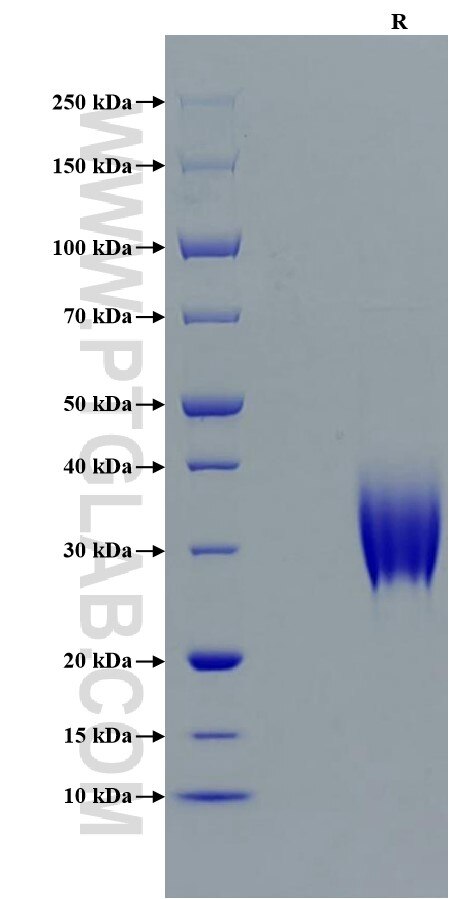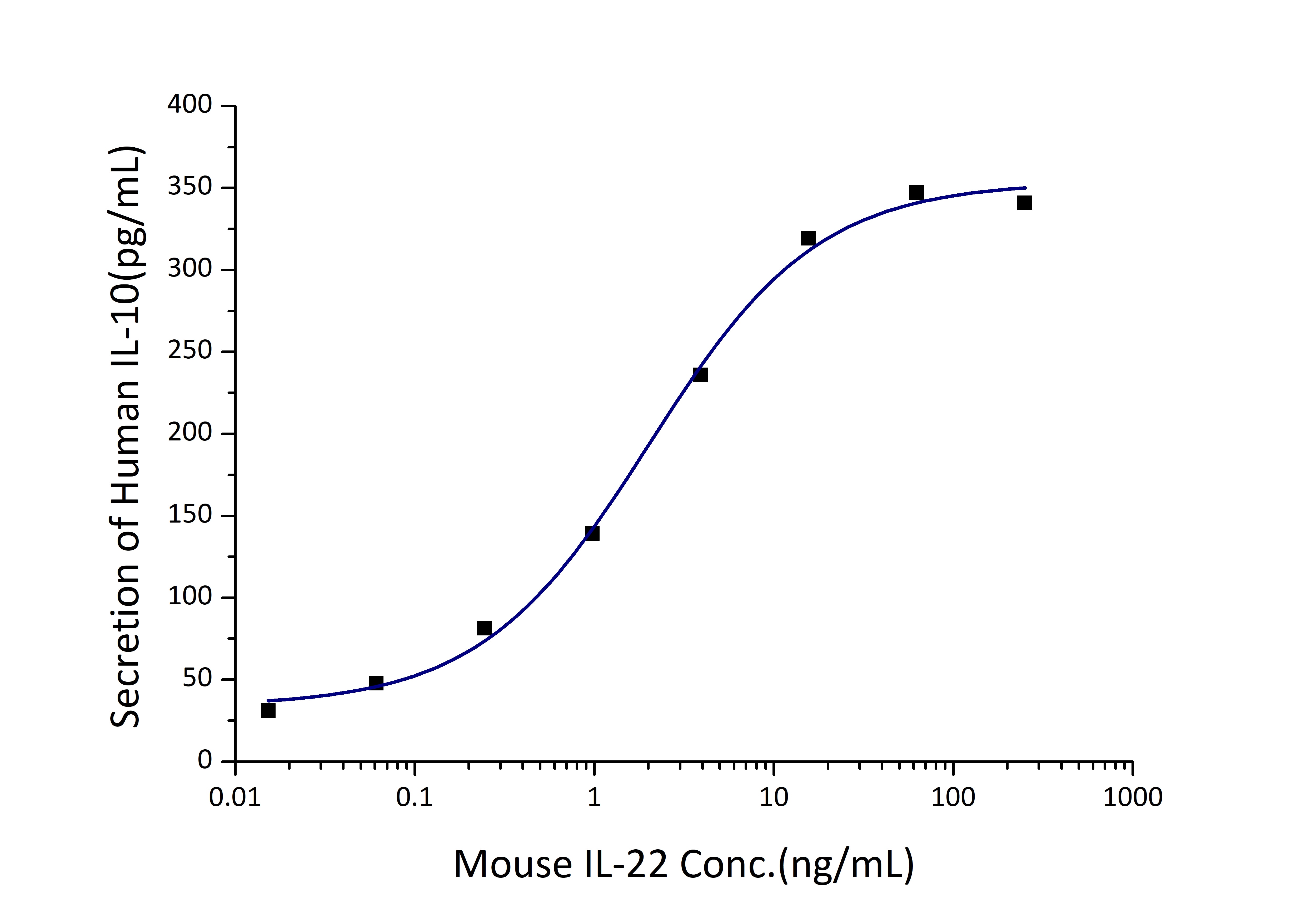Recombinant Mouse IL-22 protein (His Tag)
Species
Mouse
Purity
>95 %, SDS-PAGE
Tag
His Tag
Activity
EC50: 2-8 ng/mL
Cat no : Eg0405
Validation Data Gallery
Product Information
| Purity | >95 %, SDS-PAGE |
| Endotoxin | <0.1 EU/μg protein, LAL method |
| Activity |
Measured by its ability to induce IL-10 secretion in COLO 205 human colorectal adenocarcinoma cells. The ED50 for this effect is 2-8 ng/mL. |
| Expression | HEK293-derived Mouse IL-22 protein Leu34-Val179 (Accession# Q9JJY9) with a His tag at the C-terminus. |
| GeneID | 50929 |
| Accession | Q9JJY9 |
| PredictedSize | 20.4 kDa |
| SDS-PAGE | 26-38 kDa, reducing (R) conditions |
| Formulation | Lyophilized from 0.22 μm filtered solution in PBS, pH 7.4. Normally 5% trehalose and 5% mannitol are added as protectants before lyophilization. |
| Reconstitution | Briefly centrifuge the tube before opening. Reconstitute at 0.1-0.5 mg/mL in sterile water. |
| Storage Conditions |
It is recommended that the protein be aliquoted for optimal storage. Avoid repeated freeze-thaw cycles.
|
| Shipping | The product is shipped at ambient temperature. Upon receipt, store it immediately at the recommended temperature. |
Background
Interleukin-22 (IL-22) is a recently described IL-10 family cytokine that is produced by T helper (Th) 17 cells, γδ T cells, NKT cells, and newly described innate lymphoid cells (ILCs). IL-22 has the potential to interact with IL-10 because it binds to the IL-10R2c chain with IL-22R1 in its receptor complex. Binding can be blocked by the soluble receptor, IL-22 binding protein (IL-22BP). IL-22 primarily targets nonhematopoietic epithelial and stromal cells, where it can promote proliferation and play a role in tissue regeneration. IL-22 can contribute to immune disease through the stimulation of inflammatory responses, S100s and defensins. IL-22 also promotes hepatocyte survival in the liver and epithelial cells in the lung and gut similar to IL-10.
References:
1. Pestka S. et al. (2004) Annu Rev Immunol. 22: 929-79. 2. Wolk K. et al. (2002) J Immunol. 168(11): 5397-5402. 3. Zheng Y et al. (2007) Nature. 445: 648-651. 4. Zheng Y et al. (2008) Nat Med. 14: 282-289. 5. Xie MH, et al. (2000) J Biol Chem. 275: 31335-9. 6. Jones BC, et al. (2008) Structure. 16:1333-44.

